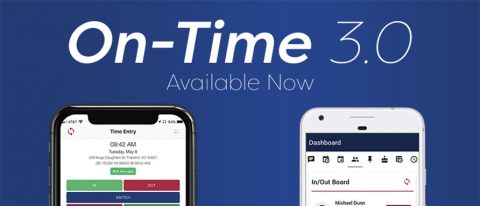You may not know it, but according to the US Department of Labor and Wages, you are allowed by law to do time rounding on your employees time. But there is a catch. Legally, you must round both ways utilizing the rule of 8’s. For example, when rounding in 15-minute intervals the employee must work 8 minutes of the interval before rounding occurs. Let’s say I am to start work at 8:00 am. If I punch in between 7:45 am to 7:53 am, my time will be rounded back to 7:45 am. If I punch after 7:53 am it rounds up to 8:00 am. You must round both ways, forward and backward. By not rounding both ways, you are in violation of the US Department of Labor and Wages.
You can do time rounding in various other increments other than 15-minute. For example, you can round in 10-, 6-, or 5-minute intervals. In these cases, the rounding should be that on the majority of time worked is over half of the interval. i.e. You must work 6 of a 10-minute interval and so forth.
The US Department of Labor and Wages feels that time rounding, when done correctly, will balance itself out for the employees. They give these examples:
Example #1:
An intermediate care facility docks employee by a full quarter-hour (15 minutes) when they start work more than seven minutes after the start of their scheduled shift. Does this practice comply with the FLSA requirements? Yes, as long as the employees’ time rounds up a full quarter-hour when the employee starts working from 8 to 14 minutes before their shift or if the employee works from 8 to 14 minutes beyond the scheduled end of their shift.
Example #2:
An employee’s schedule is 7 a.m. to 3:30 p.m. with a thirty-minute unpaid lunch break. The employee receives overtime compensation after 40 hours in a workweek. The employee clocks in 10 minutes early every day and clocks out 7 minutes late each day. The employer follows the standard rounding rules. Is the employee entitled to overtime compensation? Yes. If the employer rounds back a quarter-hour each morning to 6:45 a.m. and rounds back each evening to 3:30 p.m., the employee will show a total of 41.25 hours worked during that workweek. The employee will be entitled to additional overtime compensation for the 1.25 hours over 40.
Example #3:
An employer only records and pays for time if employees work in full 15-minute increments. An employee’s schedule is 8 hours a day Monday thru Friday for a total of 40 hours a week, and he earns $10 per hour. The employee always clocks out 12 minutes after the end of her shift. The employer pays them $400 per week. Does this comply with the FLSA? No, the employer has violated the overtime requirements. The employee works an hour each week (12 minutes times 5) but receives no compensation for it. The employer has not violated the minimum wage requirement because the employee was paid $9.75 per hour ($400 divided by 41 hours). However, the employer owes the employee for one hour of overtime each week.
On-Time Web makes this easy with Punch Rounding Rules built-in. On-Time Web keeps the original punch time. Just setup the punch rounding and the system does the rest. You can round on the IN Punch, OUT Punch, Go to Lunch, Return from Lunch, OUT for Break and In from Break. Select your rounding intervals from 5, 6, 10 and 15 minutes and then set your required work time in minutes and save.
Try On-Time Web for free and see how easy it is. https://www.on-timeweb.com/free-trial-signup/














